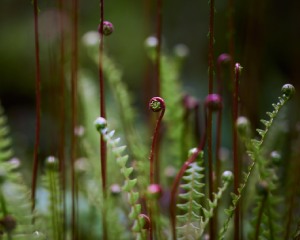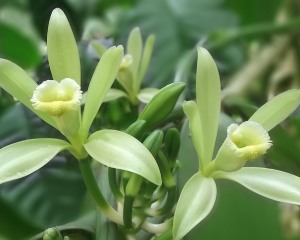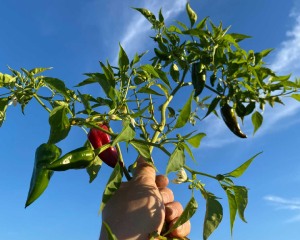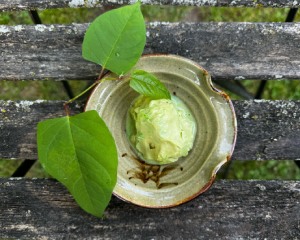
World Sensorium: Mapping the Intangible and Tangible Cultural Heritage of Aromatic Plants
By Gayil Nalls
Sign up for our monthly newsletter!
T he enigmatic sense of smell is an evolutionary marvel, profoundly shaping human behavior and tethering us to the natural environment through chemical interactions. Even though ephemeral, the fragrances of plants have left indelible marks on the human condition, deeply intertwined with our memory, emotions, identity, and survival instincts. For our collective nose, these botanical aromas are potent symbols laden with meaning, woven into the fabric of cultures worldwide. Iconic plants, celebrated for their powerful aromatic properties, have risen to high cultural status in various regions, influencing cognitive and physiological responses, evoking profound sentiments, and fostering intimate connections. The invisible molecules of these smells that we breathe in trigger feelings that are the essence of consciousness and being alive. The scents of World Sensorium are a collection of these important assets that are part of our intangible cultural heritage, preserved through societal memory as felt meaning, and passed down from generation to generation.
The World Sensorium Project: Documenting Traditional Knowledge Related to Aromatic Plants
The World Sensorium Project, approached through art and science, has embarked on an extensive and ongoing journey to chart the tangible (the physical ways) and the intangible (the felt and intellectual ways) of aromatic plants and their cultural legacies, clarifying that distinct plant smells characterize people, nations, and cultures. The ongoing project delves into how diverse cultures engage with and utilize these botanical treasures, expressing humanity’s symbiotic relationship with the plant kingdom. The country pages on the World Sensorium website serve as a vivid cartographic window into the cultural heritage of aromatic plants. This geographic journey reveals how these plants are revered, utilized, and integrated into daily life worldwide, informed by a comprehensive semi-structured ethnobotanical survey conducted in collaboration with governments, documenting the commonalities and differences between cultures through their olfactory heritage. The country pages provide information on culinary traditions, medical and spiritual uses, objects and aesthetics, symbolism, and how the climate crisis impacts aromatic and medicinal plants globally.
Culinary Traditions
In the World Sensorium list of iconic aromatic plants, flora such as rose, jasmine, vanilla, lavender, thyme, rosemary, bay, and ginger are integral to individual countries and culinary traditions across the globe. They flavor traditional dishes, create unique tastes, add depth to recipes, and act as preservatives. In addition to folklore, mythology, and storytelling, we document techniques for growing, harvesting, and preparing these plants that are passed down through generations, contributing to the cultural identity of communities.
Medicinal Uses
Plants synthesize chemical compounds for their functions and protection. Medicinal plants have therapeutic properties recognized since before written records and are now scientifically established. Iconic aromatic plants in World Sensorium have been used medicinally for centuries, forming part of traditional medicine systems like Ayurveda, Traditional Chinese Medicine, and Indigenous healing practices. These plants’ exceptional properties include essential oils and bioactive aromatic molecules. For example, lavender has calming effects, eucalyptus aids respiratory relief, and elder blossom boosts the immune system. An interesting statement from Palau notes that the scent of turmeric signifies a new mother ready for her traditional post-birth baths.
Religious and Spiritual Rituals
Aromatic plants hold profound significance in global belief systems, rituals, and ceremonies. Incense derived from botanicals such as frankincense, myrrh, juniper, sage, cedar, sandalwood, lemongrass, and other World Sensorium plants are used in religious rites, spiritual practices, and cultural festivities. While some historians trace the tradition of incense to China and its spread through Asia, incense and aromatics have also played a vital role in the ancient spiritual realms and daily offerings in Africa. In Senegal, the roots of Gowe (Cyperus articulatus), an aromatic sedge, have been foraged by women and burned in homes for centuries. Christianity, Islam, and Judaism also have rich intangible cultural heritage associated with these revered botanicals. The burning of plants is often accompanied by prayers, chants, or specific rituals, further enriching the cultural significance of these practices.
Fragrances and Aromatherapy
Essential oils from aromatic plants have been fundamental for creating perfumes and fragrances. Cultures worldwide have developed unique methods for extracting and blending these scents, utilizing traditional techniques refined over generations.
Aromatherapy, the therapeutic use of aromatic plants and their essential oils is another integral aspect of this cultural heritage, encompassing healing practices and rituals such as sauna use, herbal baths, and massage therapies.
Renowned traditional perfume plants in the World Sensorium include jasmine, rose, lavender, gardenia, plumeria, violet, carnation, and orange blossom. In Argentina, lemon holds a special place as a significant scent, traditionally considered masculine and commonly worn by men.
Art, Craftsmanship, and Aesthetics
Aromatic plants are used in art, craftsmanship, and aesthetics. Dried flowers and herbs may be incorporated into decorative arrangements, wreaths, potpourri, leis, or sachets, reflecting cultural aesthetics and preferences. Weaving fragrant plants into one’s hair or decorating animals with them is a tradition in many parts of the world. In Angola, the Porcelain Rose, or Torch Ginger Flower, is a favorite in both live and dried decorative arrangements as a welcoming symbol of hospitality. Native to Gabon is the aromatic Gabon Mahogany, a hardwood tree also known as Okoume (Aucoumea klaineana), from which musical instruments and other artifacts are made.
Cultivation Practices
The cultivation of aromatic plants is deeply rooted in response to the natural environment and traditional agricultural practices. For example, the ancient country of Armenia takes its name from the apricot (Prunus armeniaca), and has developed unique methods for growing, harvesting, and preserving this plant. These practices, adapted to local climates, soil conditions, and cultural preferences, shape the appearance and function of rural and urban areas. Important and unique cultivation practices revolve around many plants in World Sensorium including pineapple, lemon, apricot, mango, aloe, lotus, banana, coconut, coffee, lavender, tobacco, olive, grape, cocoa, nutmeg, cashew, paprika, flax, and allspice.
National Symbolism
The World Sensorium research points to the fact that we need to rethink our explanations for symbolism. What the nose tells the brain has led to social and cultural forms with the perception of aromatic plants holding unique understandings and symbolic meanings in various cultural collectives universally, contributing to social cohesion. Jasmine, identified as the iconic scent by 11 countries in the World Sensorium survey, is the national flower of Tunisia and Pakistan and symbolizes the 2010 Tunisian Revolution. The rose is iconic for 8 countries, and the lotus is the national flower, symbolizing purity and enlightenment in Vietnam, Egypt, Cambodia, and India, which also reveres sandalwood.
The tangible and intangible cultural heritage of aromatic plants encompasses a range of practices, traditions, and plants as aesthetic artifacts that reflect their deep significance in human societies and cultural heritage that must be preserved. Olfactory heritage is associated with people, places, and practices, in an interweaving of botany and biology.
Modern science has uncovered many mechanisms behind their efficacy, revealing antimicrobial, anti-inflammatory, and antioxidant properties that support their traditional uses. For example, the inhalation of specific oils can trigger neurological responses that alleviate stress, anxiety, and depression, highlighting the profound connection between humans and the natural world. Beyond this, demand is also increasing worldwide for these medicinal plants due to benefits with fewer side effects.
Sensorium Conservancy wants you to know the value of these plants, the problems they face, and the solutions you can be a part of. Educating ourselves on their cultural value and taking conscious measures in our daily lives can preserve these treasured plants for future generations. Help save aromatic and medicinal plants and our olfactory heritage by protecting wild native plant habitats and restoring biodiversity. Cultivate and naturalize threatened aromatic species to ensure their continued survival.
The plants of World Sensorium, recognized as living expressions of both intangible and tangible cultural heritage through official responses from countries, embody crucial knowledge of nature, social practices, and inherited traditions. It is essential to safeguard this heritage internationally for future generations. Each country should acknowledge the importance of preserving these iconic plants, which are integral to the planet’s biodiversity and cultural legacy and prioritize their conservation as a national mandate. Iconic aromatic and medicinal plants are treasures of humanity, celebrated worldwide. Ensuring the survival of these living heritage plants is vital for all life’s well-being.
Gayil Nalls, Ph.D., is the creator of World Sensorium and founder of the World Sensorium/Conservancy.
To read the WS Country Pages, scroll down on the landing page of worldsensorium.com.
Plantings
Issue 36 – June 2024

Viriditas: Musings on Magical Plants—Rosa spp
By Margaux Crump

I Think, Therefore I Relate
By Jake Eshelman

The Boy Who Was King of Vanilla
By Elena Kazamia

Learning to Grow with The Hampton’s Pepper Professionals
By Ian Sleat

The Dual Nature of Japanese Knotweed
By Gayil Nalls

Eat More Plants Recipes:
Japanese Knotweed Sorbet
By Gayil Nalls

As Ireland transitions from the rich, smoky scent of peat-burning to a more sustainable future, its olfactory heritage is evolving. What will become the next iconic aromatic symbol of Ireland?
Click to watch the documentary trailer.

